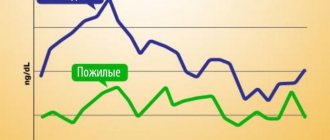Imigran
Active substance:
Sumatriptan*
Pharmgroup:
Serotonergic agents
Analogs for the active substance:Amigrenin Migrepam Sumamigren Sumatriptan Sumatriptan Adifarm Sumatriptan Pfizer Sumatriptan succinate Sumitran | Application area:Basilar migraine Migraine without aura Migraine with aura |
Compound
One tablet of Imigran contains 50 or 100 mg sumatriptan ( sumatriptan succinate ) + lactose anhydrous, croscarmellose sodium, Opadry pink food coloring (100 mg dosage contains white coloring), titanium dioxide, red iron oxide, methylhydroxypropylcellulose, lactose monohydrate, croscarmellose sodium, magnesium stearate , triacetin.
Imigran spray contains per dose 20 or 10 mg of the active ingredient sumatriptan + anhydrous disubstituted sodium phosphate, sodium hydroxide, monopotassium phosphate, sulfuric acid, purified water.
Instructions:
Clinical and pharmacological group
02.060 (Serotonin 5-HT1 receptor agonist. Drug with anti-migraine activity)
Release form, composition and packaging
The tablets are pink, oval, biconvex, film-coated, with “GX ES3” engraved on one side and a plain surface on the other.
| 1 tab. | |
| sumatriptan succinate | 70 mg, |
| which corresponds to the content of sumatriptan | 50 mg |
Excipients: lactose monohydrate, lactose anhydrous, microcrystalline cellulose, croscarmellose sodium, magnesium stearate.
Shell composition: opadry pink YS-1-1441-G, methylhydroxypropylcellulose, titanium dioxide, triacetin, red iron oxide.
2 pcs. - blisters (1) - cardboard packs.
White or off-white film-coated tablets, oval, biconvex, engraved with “GX ET2” on one side and a plain surface on the other.
| 1 tab. | |
| sumatriptan succinate | 140 mg, |
| which corresponds to the content of sumatriptan | 100 mg |
Excipients: lactose monohydrate, lactose anhydrous, microcrystalline cellulose, croscarmellose sodium, magnesium stearate.
Shell composition: opadry white OY-S-7393, titanium dioxide, methylhydroxypropylcellulose.
2 pcs. - blisters (1) - cardboard packs.
pharmachologic effect
A specific selective agonist of serotonin 5HT1D receptors (5-hydroxytryptamine-1-like), located primarily in the blood vessels of the brain. Stimulation of 5HT1D receptors leads to vasoconstriction. The drug does not act on other subtypes of serotonin 5HT receptors (5HT2-5HT7).
Experimental studies have shown that sumatriptan causes selective constriction of the carotid arteries without significantly affecting cerebral blood flow. The carotid arteries supply blood to extracranial and intracranial tissues, incl. meninges. It is believed that dilation of these vessels and/or their swelling is the main mechanism for the development of migraine in humans. In addition, it has been experimentally established that sumatriptan inhibits the activity of the trigeminal nerve. It is believed that these effects underlie the antimigraine activity of sumatriptan.
The clinical effect is observed 30 minutes after oral administration of the drug at a dose of 100 mg, 15 minutes after intranasal administration of the drug.
Pharmacokinetics
Suction
When the drug is taken orally, sumatriptan is rapidly absorbed; after 45 minutes its plasma concentration reaches 70% of Cmax. After oral administration of 100 mg of sumatriptan, Cmax in blood plasma averages 54 ng/ml. Absolute bioavailability when taken orally due to first-pass metabolism and incomplete absorption averages 14%.
After intranasal administration, sumatriptan is rapidly absorbed, Cmax is reached after 1-1.5 hours and is 12.9 ng/ml. The bioavailability of Imigran when administered intranasally is 15.8% of that when administered subcutaneously, which is apparently due to first-pass metabolism.
Distribution
Plasma protein binding is 14-21%, Vd is 170 l.
Metabolism
Metabolized by oxidation with the participation of MAO type A with the formation of metabolites, the main of which is the indoleacetic analogue of sumatriptan, which does not have pharmacological activity against serotonin 5HT1 and 5HT2 receptors. No minor metabolites have been identified.
Removal
On average, plasma clearance is 1160 ml/min, renal clearance is 260 ml/min. Extrarenal clearance accounts for 80% of the total clearance. T1/2 is 2 hours.
The main metabolite of sumatriptan is excreted primarily in the urine as the free acid or glucuronide conjugate.
Pharmacokinetics in special clinical situations
Migraine attacks do not appear to have a significant effect on the pharmacokinetics of sumatriptan when administered intranasally or orally.
If liver function is impaired, an increase in plasma levels of sumatriptan is observed as a result of a decrease in presystemic clearance.
Dosage
Imigran is not intended for use for prophylactic purposes.
Imigran is recommended to be used as early as possible after the onset of a migraine attack, but it is equally effective at any stage of the attack.
Orally, to relieve acute migraine attacks, adults are prescribed Imigran in the recommended dose of 50 mg, in some cases - 100 mg. If migraine symptoms do not disappear or decrease after the first dose of Imigran, the drug should not be re-prescribed to relieve an ongoing attack.
However, Imigran can be used to relieve subsequent migraine attacks.
If symptoms have decreased or resolved and then returned, a second dose may be taken within the next 24 hours, provided that the interval between doses is at least 2 hours. During any 24-hour period, the maximum dose of Imigran should not exceed 300 mg.
The tablets should be swallowed whole with water.
Overdose
There are reports of overdose with subcutaneous administration of Imigran. Patients received single injections of up to 12 mg subcutaneously without significant adverse reactions. When the drug was administered in a single dose of 40 mg intranasally and more than 400 mg orally, no other adverse reactions were observed other than those listed above.
Treatment: in case of overdose of Imigran, the patient should be observed for 10 hours, providing symptomatic therapy as necessary.
There are currently no data on the effect of hemodialysis or peritoneal dialysis on plasma concentrations of sumatriptan.
Drug interactions
When taken simultaneously with ergotamine, prolonged vasospasm was observed. Sumatriptan can be prescribed no earlier than 24 hours after taking medications containing ergotamine; conversely, drugs containing ergotamine can be prescribed no earlier than 6 hours after taking sumatriptan.
Interaction between sumatriptan and MAO inhibitors is possible; their simultaneous use is contraindicated.
There are isolated reports of the development of weakness, hyperreflexia and loss of coordination in patients after concomitant use of sumatriptan and selective serotonin reuptake inhibitors (the use of the combination requires caution and monitoring of the patient's condition).
There was no interaction of sumatriptan with propranolol, flunarizine, pizotifen and ethanol.
Use during pregnancy and lactation
The drug is contraindicated for use during pregnancy, because clinical experience with the use of Imigran during pregnancy is limited.
The drug should be used with caution during lactation. It is not recommended to breastfeed your baby within 24 hours after taking sumatriptan.
Side effects
From the cardiovascular system: possible arterial hypotension, bradycardia, palpitations, tachycardia (including ventricular), transient increase in blood pressure soon after administration of the drug; in some cases - heart rhythm disturbances, transient ischemic ECG changes, myocardial infarction, coronary artery spasm; There are isolated reports of the development of Raynaud's syndrome.
From the digestive system: some patients experienced nausea and vomiting, but the connection of these phenomena with the use of Imigran has not been proven; rarely - ischemic colitis; in some cases - a slight increase in the activity of liver enzymes, dysphagia, and a feeling of discomfort in the abdomen.
From the side of the central nervous system: hot flashes, dizziness, weakness (usually mild or moderate and transient); rarely - drowsiness, feeling tired; in some cases - seizures (most of these patients had a history of epilepsy or structural brain lesions, which can lead to the development of epilepsy). Sometimes after taking Imigran, diplopia, flickering before the eyes, nystagmus, scotoma, and decreased visual acuity are noted; very rarely - transient partial loss of vision (it should be borne in mind that visual impairment may be associated with the migraine attack itself).
Allergic reactions: in some cases - skin reactions (rash, itching, erythema), anaphylaxis.
Other: pain, tingling sensation, feeling of heat, feeling of heaviness, pressure or constriction are possible. These symptoms are usually transient and can be intense and occur in any part of the body, including the chest and throat.
Storage conditions and periods
Imigran in the form of film-coated tablets should be stored at a temperature not exceeding 30°C. The shelf life of film-coated tablets, 100 mg, is 4 years. The shelf life of film-coated tablets, 50 mg, is 3 years.
Conditions for dispensing from pharmacies
The drug is available with a prescription.
Indications
- relief of acute migraine attacks with or without aura.
Contraindications
- hemiplegic, basilar and ophthalmoplegic forms of migraine;
— IHD (including myocardial infarction, post-infarction cardiosclerosis, Prinzmetal’s angina) or the presence of symptoms suggesting or suspecting the presence of IHD;
- occlusive diseases of peripheral vessels;
— stroke or transient cerebrovascular accident (including history);
- uncontrolled arterial hypertension;
- severe dysfunction of the liver/or kidneys;
- simultaneous use of drugs containing ergotamine or its derivatives (including methysergide);
- simultaneous use of MAO inhibitors and a period of up to 14 days after their discontinuation;
- pregnancy;
— age of patients under 18 years and over 65 years;
- hypersensitivity to the drug.
Prescribed with caution for epilepsy (including any conditions with a decrease in the threshold of convulsive readiness), patients with controlled arterial hypertension, because the drug may cause a transient increase in blood pressure and peripheral vascular resistance.
special instructions
Imigran should be prescribed only if the diagnosis of migraine is beyond doubt.
The drug is not used to prevent attacks.
If there is no effect from the first dose, the diagnosis should be clarified.
Imigran should be used as early as possible after the onset of a migraine attack, but the drug is effective at any stage of the attack (especially when the attack is combined with nausea and vomiting).
When prescribing Imigran for the purpose of relieving headaches in patients with previously undiagnosed migraine or with migraine occurring with atypical symptoms, other potentially dangerous neurological diseases should be excluded (as with the use of other drugs intended for relieving migraine attacks). It must be borne in mind that patients with migraine are at risk of developing cerebrovascular complications (including stroke or transient cerebrovascular accident).
The drug should not be prescribed to patients at risk of developing pathology from the cardiovascular system, without prior examination to exclude the disease. Such patients include postmenopausal women, men over 40 years of age, and persons with risk factors for coronary artery disease.
After taking the drug, temporary side effects such as pain and tightness in the chest may occur. The pain can be intense and radiate to the neck. If there is reason to believe that these symptoms are a manifestation of coronary artery disease, it is necessary to conduct an appropriate diagnostic examination.
The drug is prescribed with caution to patients with controlled arterial hypertension (since in some cases there is a transient increase in blood pressure and peripheral vascular resistance).
The drug should be used with caution in patients with diseases that may significantly alter the absorption, metabolism or excretion of sumatriptan, for example, impaired renal or hepatic function.
In patients with hypersensitivity to sulfonamides, when administered with sumatriptan, allergic reactions may develop, which range from skin manifestations to anaphylactic shock. Cross-sensitivity data are limited, but caution is warranted when prescribing sumatriptan to these patients.
The drug should be prescribed with caution to patients with epilepsy or organic brain lesions that lower the threshold for convulsive readiness (including a history of it).
In case of simultaneous administration of Imigran and serotonin reuptake inhibitors, the patient's condition should be carefully monitored.
The recommended doses of Imigran should not be exceeded.
Impact on the ability to drive vehicles and operate machinery
With migraine, as well as during therapy with Imigran, drowsiness may develop. Therefore, during the period of use of Imigran, patients should be especially careful when driving a car and engaging in other potentially hazardous activities that require a high speed of psychomotor reactions.
Use for renal impairment
Contraindicated in cases of severe renal impairment.
Use for liver dysfunction
Contraindicated in cases of severe liver dysfunction.
Directions for use and dosage
Imigran is recommended to be used as early as possible after the onset of a migraine attack, although it is effective at any stage. The tablets are taken orally with water, the spray is administered intranasally.
The recommended single dose of Imigran in tablet form is 50 mg, in some cases the doctor may prescribe 100 mg; in spray form - 10 or 20 mg.
If the symptoms do not disappear or at least do not decrease, further use of the drug is not advisable. If the attack has passed, or the severity of symptoms has decreased, but then the migraine returns, you can take/inject a second dose, but provided that at least 2 hours have passed between doses. The maximum permissible daily dosage is 300 mg for tablets, 40 mg for spray (two doses of 20 mg each).
Rules for using nasal spray:
- Clean the nasal cavity;
- Take a comfortable position (you can sit);
- Close one nostril - press it firmly with your finger to the nasal septum;
- Breathing through your mouth, insert the tip into the second nostril to a depth of approximately 1 cm;
- Without throwing your head back, close your mouth;
- Take a calm breath through your nose while pressing the blue button with your thumb;
- Open your mouth and breathe calmly through your mouth;
- Take a calm breath through your nose and slowly (within 10-20 seconds) exhale through your mouth. Don't breathe deeply!
Contraindications
The drug is not recommended for use:
- if you are allergic to its components;
- if the patient has previously had a stroke or cases of severe cerebrovascular accident;
- after myocardial infarction ;
- for coronary heart disease , peripheral vascular diseases, Prinzmetal's angina ;
- under 18 years of age, over 65 years of age;
- persons suffering from severe liver dysfunction;
- during therapy with MAO inhibitors (at least 14 days must pass), ergotamine or its derivatives, 5-HT1 receptor agonists .
Interaction
The drug can be taken with Propranolol, Pizotifen, ethanol and Flunarizine .
Combining the drug with Ergotamine can lead to vasospasm. It is necessary to maintain a 24-hour interval between doses.
Imigran cannot be combined with MAO inhibitors .
selective serotonin reuptake inhibitors caution may develop: weakness, impaired coordination of movements, and hyperreflexia .
Release form
The medicine is produced in the form of pink (50 mg) or white (100 mg) oval convex tablets. On one side there is an engraving “IMIGRAN”, on the other there is an inscription 50 (or only 50), on tablets with a dosage of 100 mg there is an engraving “GLAХO” on one side and “IMIGRAN” (or 100) on the other. If you break the tablet in half, the inside will be white or almost white. The product is sold in blisters of 1 or 2 pieces, in a cardboard pack one or 2 blisters.
The drug is also sold in disposable bottles with a dispenser, with a capacity of 20 or 10 mg, in a cardboard box there are 1 or 2 bottles. The liquid is clear, dark or light yellow.
Side effects
During clinical studies, the following adverse reactions were identified:
- burning or irritation in the nasal cavity or throat (for spray), shortness of breath , nosebleeds ;
- dizziness , paresthesia , decreased sensitivity, drowsiness ;
- hot flashes, increased blood pressure ;
- decreased blood , bradycardia , tachycardia , nausea;
- vomiting, feeling hot or cold, or a feeling of squeezing, heaviness, or tightness in various parts of the body, including the throat or chest;
- weakness, fatigue.
As a result of post-marketing observations, the following were identified:
- tremor , convulsions , nystagmus , dystonia ;
- decreased visual acuity, blindness that passes over time, diplopia , scotoma ;
- cardiac arrhythmias , changes in the electrocardiogram , Raynaud's syndrome ;
- dysphagia , epigastric (for tablets), ischemic colitis ; allergic skin rashes, anaphylaxis .
Reviews
They respond very well to the medicine. Adverse reactions from taking tablets or using a spray occur infrequently. Some complain that the medicine can be difficult to obtain.
Reviews of Imigran spray and tablets:
- “... A very good drug. A Korean neurologist prescribed him. During the attack I drank, after 1.5 hours I felt relief, after 2 hours the pain completely disappeared”;
- “...I was prescribed this drug for cluster headaches by a neurologist. To be honest, I used to think that these headaches cannot be relieved by anything - you just need to wait and clench your fists, but Imigran nasal spray really helps after about 15-20 minutes, so the drug is not bad. The only “but” is its price and the fact that there is only one dose in the package. Unfortunately, you can’t find it in every pharmacy and there is a maximum of 3 doses available.”





